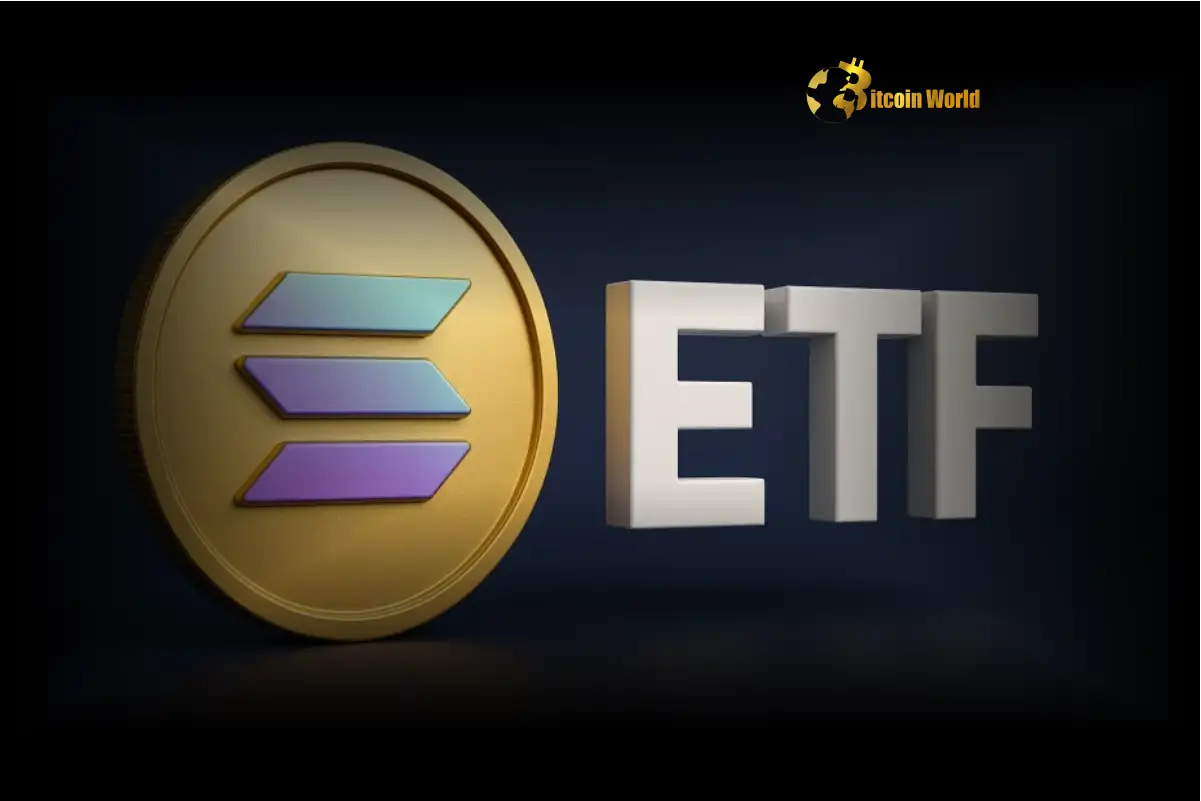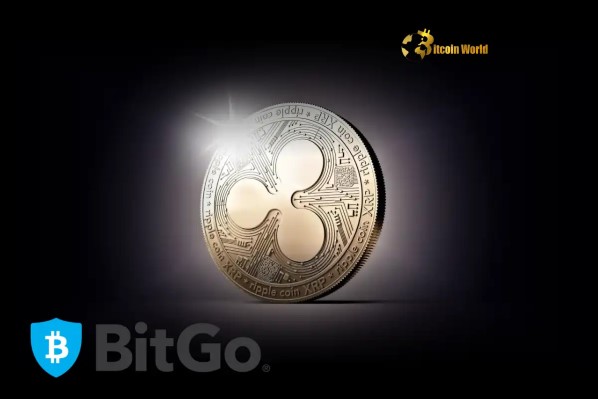BitcoinWorld

Crypto Regulation: A Powerful Catalyst for US Dollar Dominance and Financial Stability
In the dynamic world of cryptocurrencies, where innovation often outpaces traditional frameworks, a significant conversation is unfolding about how digital assets intersect with established financial systems. One voice making waves is Michael Faulkender, the United States Deputy Secretary of the Treasury, who recently shared a compelling perspective: he believes that clear and thoughtful crypto regulation will not only benefit the digital asset space but also serve to further strengthen the US dollar as the world’s leading reserve currency. This isn’t just about control; it’s about harnessing the power of innovation while ensuring robust financial stability. But how exactly can regulating a decentralized ecosystem bolster a centralized currency? And what role do stablecoins play in this grand strategy?
What Did Michael Faulkender Say About Crypto Regulation?
Michael Faulkender’s statement highlights a nuanced understanding of the evolving digital economy. His core message is clear: rather than viewing cryptocurrency as a threat to traditional finance, effective regulation can integrate it in a way that reinforces the strengths of the existing system. Specifically, he emphasized that a well-regulated crypto market would:
- Enhance Confidence: By providing clear rules of the road, regulation reduces uncertainty and risk, making the crypto market more appealing to institutional investors and mainstream users. This increased confidence can indirectly support the broader financial ecosystem, which is anchored by the US dollar.
- Combat Illicit Activities: Stronger regulatory oversight helps in preventing money laundering, terrorist financing, and other illegal activities that can erode public trust in both crypto and the financial system at large. A cleaner, more transparent market benefits everyone.
- Foster Responsible Innovation: Regulation doesn’t have to stifle innovation. Instead, it can provide a secure framework within which new technologies and business models can flourish responsibly, without posing systemic risks.
Faulkender also pointed out a crucial need for the private sector to step up and educate the public about stablecoins. This call to action underscores the importance of public understanding and adoption for the success of any regulatory framework.
How Crypto Regulation Can Strengthen the US Dollar
The idea that crypto regulation can bolster the US dollar‘s position as a reserve currency might seem counterintuitive to some. After all, isn’t crypto designed to be an alternative to traditional fiat? However, Faulkender’s argument rests on several key pillars:
Solidifying the Dollar’s Digital Footprint
As the global economy becomes increasingly digital, the way transactions occur is shifting. If digital assets, particularly stablecoins, become a significant medium of exchange, ensuring that the most widely used stablecoins are pegged to and backed by the US dollar is paramount. Regulation can ensure that these digital dollar equivalents are trustworthy and operate transparently, extending the dollar’s reach and utility into the digital realm.
Reducing Systemic Risk for Greater Financial Stability
Unregulated or poorly regulated crypto markets can pose risks to the broader financial stability. Volatility, potential for fraud, and lack of consumer protection could spill over into traditional markets. By implementing robust crypto regulation, governments can mitigate these risks, ensuring that the growth of the digital asset space contributes positively to, rather than detracts from, overall economic health. This strengthens the foundation upon which the US dollar‘s global standing rests.
Boosting International Confidence and Adoption
For the US dollar to maintain its status as the global reserve currency, it needs to be trusted and widely adopted for international trade, investment, and as a store of value. When the US provides clear, comprehensive crypto regulation, it signals to the world that it is serious about integrating digital assets responsibly. This can encourage other nations and international businesses to use dollar-pegged digital assets, further cementing the dollar’s dominance.
Consider the following benefits:
| Benefit Area | Impact of Crypto Regulation |
|---|---|
| Global Trust | Increases confidence in dollar-backed digital assets, making them preferred for international transactions. |
| Market Integrity | Reduces illicit finance, enhancing the reputation of the crypto market and its connection to the US dollar. |
| Innovation Framework | Provides a secure environment for blockchain innovation that aligns with existing financial laws. |
| Systemic Risk Mitigation | Prevents crypto market instability from negatively impacting the broader financial system. |
The Crucial Role of Stablecoins in Economic Stability
Michael Faulkender specifically highlighted stablecoins as a key area requiring public education and clear guidelines. Why are stablecoins so central to this discussion?
What are Stablecoins?
Stablecoins are a type of cryptocurrency designed to minimize price volatility. Unlike Bitcoin or Ethereum, which can experience dramatic price swings, stablecoins aim to maintain a stable value, often by pegging their value to a fiat currency like the US dollar, or to a commodity like gold. They achieve this stability through various mechanisms, such as being backed by reserves (fiat-backed), crypto-backed, or algorithmic.
Why are They Important for the US Dollar and Financial Stability?
Stablecoins, particularly those pegged to the US dollar, act as a bridge between the traditional financial system and the burgeoning crypto economy. They offer the speed and efficiency of blockchain technology while providing the stability of fiat currency. If these dollar-pegged stablecoins are well-regulated, transparent, and fully backed, they can:
- Expand Dollar Utility: They allow the dollar to be used in new, innovative ways on blockchain networks, facilitating faster, cheaper, and more accessible global transactions.
- Enhance Financial Inclusion: By making dollar-denominated assets more accessible, stablecoins can potentially bring more people into the global financial system.
- Strengthen Trust: Clear regulatory frameworks for stablecoins, ensuring proper reserves and audits, will build public trust. This trust is essential for them to become a widely accepted medium of exchange, further solidifying the US dollar‘s digital presence and contributing to overall financial stability.
The call for the private sector to educate the public about stablecoins is vital. A well-informed public is more likely to adopt and trust these digital assets, accelerating their integration into the global economy and, by extension, reinforcing the US dollar‘s digital dominance.
Ensuring Financial Stability in a Digital Age
The pursuit of financial stability in an era of rapid technological change is a complex endeavor. The advent of cryptocurrencies, while offering immense potential, also introduces new considerations for regulators and policymakers. Michael Faulkender’s comments underscore the Treasury’s proactive approach to understanding and shaping this landscape.
The Balancing Act: Innovation vs. Oversight
One of the primary challenges in crypto regulation is striking the right balance. Overly restrictive regulations could stifle the very innovation that makes the crypto space so promising. Conversely, a lack of oversight could lead to systemic risks, consumer harm, and undermine the integrity of the financial system. The goal is to create a framework that:
- Protects Consumers and Investors: Ensuring transparency, preventing fraud, and establishing clear recourse mechanisms.
- Manages Systemic Risk: Identifying and mitigating potential threats that could impact the broader financial system.
- Promotes Fair Competition: Creating a level playing field for both traditional financial institutions and new crypto ventures.
- Fosters Global Cooperation: Recognizing that crypto is borderless, international collaboration on regulatory standards is crucial to prevent regulatory arbitrage.
The Private Sector’s Indispensable Role
Faulkender’s emphasis on the private sector’s responsibility to educate the public about stablecoins is a testament to the collaborative approach needed. Government regulation alone cannot achieve widespread adoption and understanding. Industry players – from stablecoin issuers to exchanges and educational platforms – have a critical role in:
- Simplifying Complex Concepts: Breaking down the technicalities of stablecoins and blockchain for a general audience.
- Promoting Best Practices: Adhering to high standards of transparency, security, and compliance even before specific regulations are mandated.
- Building Trust: Demonstrating the utility and reliability of stablecoins through real-world applications and clear communication.
This partnership between public and private sectors is essential for navigating the complexities of digital assets and ensuring that their evolution contributes positively to the strength of the US dollar and global financial stability.
A Future Where Digital Assets Bolster Traditional Strengths
Michael Faulkender’s insights offer a compelling vision for the future of finance: one where thoughtful crypto regulation isn’t seen as a barrier, but as a bridge. By establishing clear rules, fostering responsible innovation, and ensuring the integrity of key digital assets like stablecoins, the United States can reinforce the enduring strength of the US dollar as the global reserve currency. This proactive approach to regulation is not just about managing risk; it’s about seizing the opportunity to extend the dollar’s influence into the digital age, ensuring continued financial stability and leadership in the evolving global economy. The journey ahead will require ongoing dialogue, adaptive policies, and a shared commitment from both public and private sectors to build a secure, efficient, and inclusive financial future.
To learn more about the latest crypto market trends, explore our article on key developments shaping Bitcoin institutional adoption.
Frequently Asked Questions (FAQs)
Q1: What is a reserve currency, and why is the US dollar considered one?
A reserve currency is a foreign currency held by central banks and other major financial institutions as a significant portion of their foreign exchange reserves. It is typically used for international transactions, investments, and as a benchmark for global trade. The US dollar is considered the primary reserve currency due to the size and stability of the U.S. economy, its deep and liquid financial markets, and its widespread acceptance in international trade and finance.
Q2: How can crypto regulation strengthen the US dollar?
Crypto regulation can strengthen the US dollar by bringing clarity, security, and trust to the digital asset space. By ensuring dollar-pegged stablecoins are transparently backed and well-regulated, it extends the dollar’s utility into the digital realm. Regulation also reduces risks like illicit finance and market volatility, which could otherwise undermine confidence in the broader financial system, thereby reinforcing the dollar’s global standing.
Q3: What are stablecoins, and why are they important for financial stability?
Stablecoins are cryptocurrencies designed to maintain a stable value, usually by being pegged to a fiat currency like the US dollar. They are crucial for financial stability because they offer the efficiency of blockchain technology with the predictability of traditional money. Regulated stablecoins can facilitate faster, cheaper global transactions, expand financial inclusion, and act as a reliable bridge between traditional finance and the crypto economy, reducing volatility risks.
Q4: What role does the private sector play in stablecoin education?
The private sector, including stablecoin issuers, crypto exchanges, and educational platforms, plays a vital role in educating the public. They are instrumental in simplifying complex technical concepts, promoting best practices for transparency and security, and demonstrating the practical utility of stablecoins. This education is essential for building public trust and accelerating the mainstream adoption of stablecoins, which in turn supports their integration into the broader financial system.
Q5: Are there challenges to implementing effective crypto regulation?
Yes, significant challenges exist. These include the borderless nature of cryptocurrencies, which necessitates international cooperation; the need to balance innovation with oversight; preventing regulatory arbitrage (where entities move to less regulated jurisdictions); and developing frameworks that are flexible enough to adapt to rapidly evolving technology while remaining robust against risks.
Did you find this article insightful? Share it with your network to spread awareness about the evolving landscape of crypto regulation and its impact on global finance!
This post Crypto Regulation: A Powerful Catalyst for US Dollar Dominance and Financial Stability first appeared on BitcoinWorld and is written by Editorial Team





